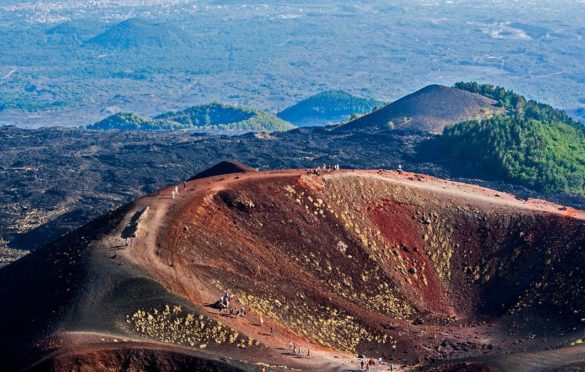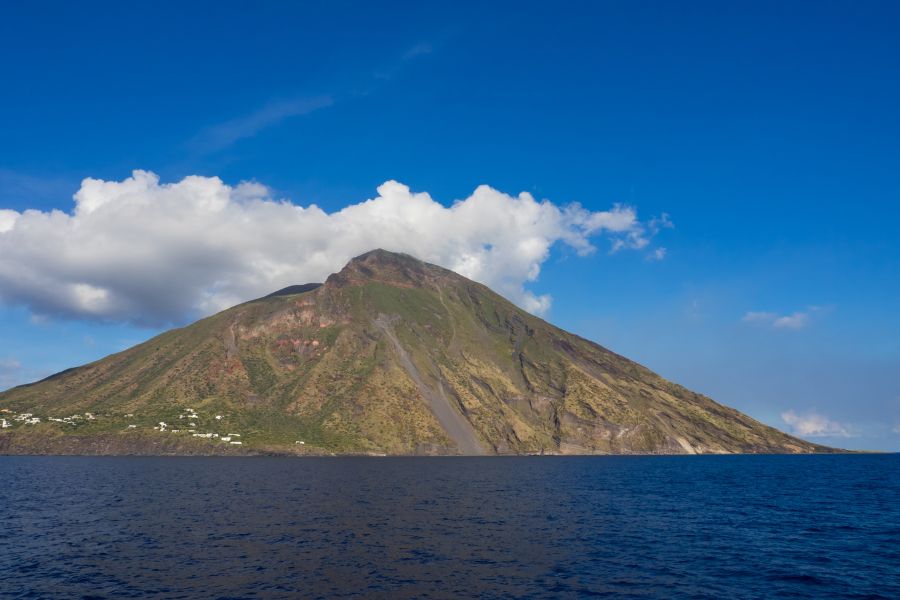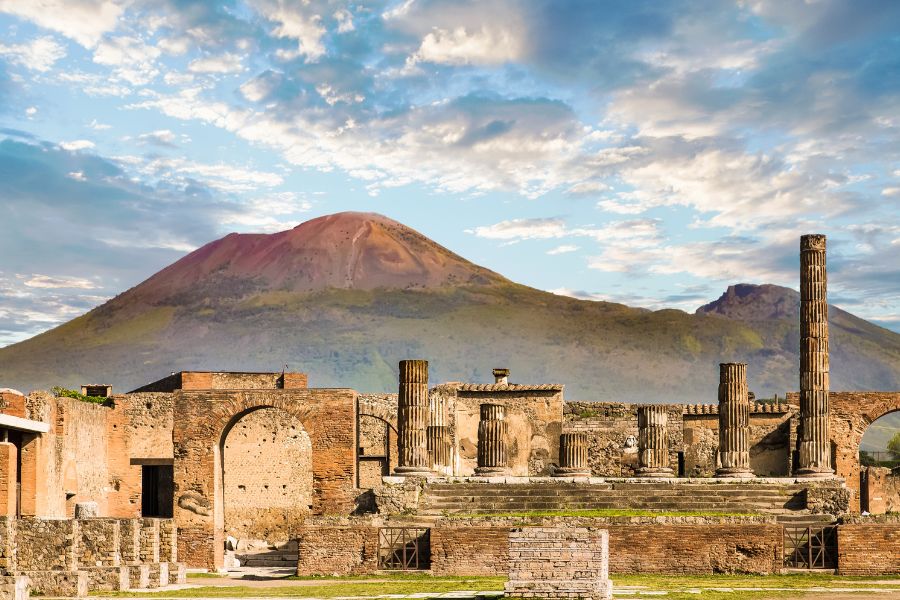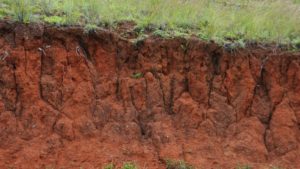Active volcano in Italy

Italian volcanoes are among the most notorious and dangerous in the world. Vulcano has given its name to all of the world’s volcanoes, the Vesuvius eruption of AD 79 is probably the best known volcanic event of all time, Strómboli is the longest continuously active volcano in the world, and Mt. Etna is the largest active volcano in Europe. There are currently three active volcanoes in Italy, find out below which volcanoes they are and important information about volcanoes.
#1 Mount Etna world’s most active volcanoes

Mount Etna is one of the world’s most active volcanoes as well as the largest in continental Europe. Its base extends 60 km (36 miles) from north to south and its height – a majestic 3,350 m (11,055 feet) – led navigators of the Classical Age to believe it was the highest point on Earth.
A quick look at Etna shows that it is a stratovolcano with steep upper slopes. The steep top part is the 260 m (860 feet) high summit cone, made up of layers of lavas and tephra. At the top of the cone is Central Crater, which is about 500 m (1,650 feet) across. This is not one but two coalescing craters, called the Chasm (or La Voragine) and the Bocca Nuova (“New Mouth”). The summit cone has two other prominent craters, known simply as the Northeast Crater and the Southeast Crater.
The frequent eruptions of Etna are reflected in the complex and constantly changing geography of its summit region – and the fact that mapmakers cannot keep up with the volcano. The most recent eruption (at the time of going to press) lasted and took place from both the northern and southern sides of the volcano, causing considerable changes to the landscape.
Tour to the Etna volcano
In 1987, the Parco dell’Etna was established, making much of the volcano, including the whole summit region, part of a national park. The facilities for visiting Etna have been steadily improving since then. Etna is a lively ski resort in the winter months, though volcano enthusiasts will fare better when snow does not obscure the lava formations and summit access is easier. Etna is rarely crowded, so anytime from May through September is a good choice.
#2 Strómboli – “Lighthouse of the Mediterranean”

Strómboli – known as the “Lighthouse of the Mediterranean” – has been almost continuously active for at least 2,500 years and it is the world’s prime destination for those who want to be sure of seeing some action. The frequent explosions, every 20 minutes on average, spray glowing lava and gas hundreds of feet into the air, creating a myriad of trails which are the subject of many a volcano photograph.
Strómboli is small, only 12.2 km2 (43⁄4 square miles) in the area and 924 m (3,050 feet) above sea level, and roughly symmetrical about a southwest-northeast trending axis.
Most of the volcano’s major vents, dikes, and fissures are located along this axis, and so is the sea-rock Strombolicchio, the remnant of an ancient eruptive center. This pattern of dikes and fractures along an axis, rather than radial to the summit, is unusual for a central volcano and is probably related to local rifting. The pattern has made the shape of the island slightly elongated and the name Strómboli somewhat unsuitable, as it is derived from the volcano’s ancient name of Strongyle, meaning “the round island.”
Tour to the Strómboli
The highlight of a visit to Strómboli is the climb to the summit. Strombóli’s highest point, I Vancori (924 m, 3,050 feet), is the remnant of an older crater, but the 918 m (3,030 feet) high Pizzo sopra la Fossa (“Ledge above the Hole”) is the “summit” most people climb to. Once visitors reach that point, they can expect to be rewarded with a fabulous and relatively safe volcano show, with explosions at intervals lasting from 5 minutes to under an hour, each throwing out incandescent magma fragments and hot gas.
The activity is normally very moderate in character, with bombs rarely reaching over 150 m (500 feet) above the rim. Strómboli, however, sometimes departs from this normal mode and can become quite dangerous. Strong explosions and even pyroclastic flows have happened in the past.
The usual trip offered is to go up in groups of about a dozen people, starting off at 6 p.m. and returning at 11:30 p.m. This gives adequate time for most tourists to view the activity, but not enough for true volcanophiles and keen photographers, given that the round trip takes about 4 hours.
#3 Vesuvius most infamous volcano in the world

Vesuvius is undoubtedly the most infamous volcano in the world. The name Vesuvius is thought to be derived from the Greek “besubios”, meaning fire, and the volcano has been dubbed “the unextinguished” – appropriately, as it is still very much active.
The 1,281 m (4,227 feet) high stratovolcano started its life erupting under the sea, later forming an island, and eventually becoming part of the Italian mainland.
Early effusions formed long lava flows that are now superimposed by the summit cone known as Mt. Somma, itself a product of powerful explosive eruptions and voluminous lava flows. Somma’s activity ended about 17,000 years ago with a major Plinian eruption that is thought to have caused the collapse of the cone’s summit, forming the Somma caldera.
The summit of Vesuvius is easily reached, as a paved road goes nearly all the way, up to the car park at “quota mille” (1,000 m (3,300 feet) elevation). Buses going up to this point leave from Ercolano and Torre del Greco. Those with private cars can drive on past the turnoff for the car park and get closer to the crater.
Driving up to the summit area is a good way of grasping the extent of urbanization on the volcano’s flanks and the magnitude of the potential hazard from a large eruption.
Tour to the Vesuvius
Vesuvius is a remarkably versatile volcano in terms of its style of activity. Its eruptions can range from Hawaiian, including lava lakes and fire-fountains within the crater, to Plinian, with deadly pyroclastic flows and surges. If some predictions are right, we can expect a repose interval of at least a couple of centuries, maybe many more. If the volcano surprises us all with an eruption in the near term, it is likely that warning signs will be detected, such as increased seismic events and ground deformation. Historical accounts indicate that these signs were evident before the AD 79 and the 1631 start-of-cycle eruptions.
However, it is clear that the evacuation of over 1 million people from the area will be a major problem. The only circumstance in which a visit to an active Vesuvius would be sensible is if the volcano unexpectedly enters a phase of middle-of-cycle mild eruptions.





